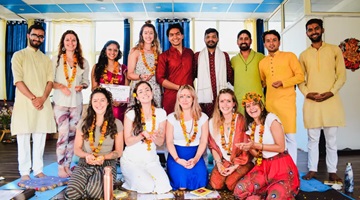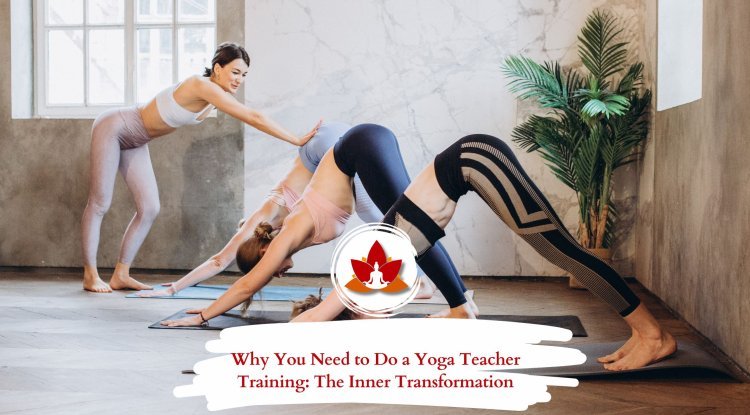Yoga Sutra 1.22 – Mrdu Madhya Adhimatratvat Tato’pi Visesah

After explaining the importance of faith, energy, memory, absorption, and insight in Yoga (Sutra 1.20), and revealing that liberation dawns swiftly for those who practice with great intensity (Sutra 1.21), Patanjali now offers a compassionate clarification: not all seekers progress at the same pace.
Each practitioner’s journey unfolds according to the depth of their effort and devotion. Some walk the path with gentle persistence, others with steady discipline, and a few with fiery, unshakable zeal.
This sutra beautifully acknowledges human diversity—it reminds us that spiritual attainment does not rest on intellectual understanding alone, but on the quality, consistency, and sincerity of our practice.
Patanjali classifies seekers into three types:
-
Mrdu (Mild): Those who practice with light effort and an irregular discipline.
-
Madhya (Moderate): Those whose commitment is steady but not at its peak intensity.
-
Adhimatra (Intense): Those who pursue the path with unwavering discipline, supreme effort, and wholehearted dedication.
Yoga Sutra 1.22 – Translation
Sanskrit: मृदु-मध्य-ाधिमात्रत्वात् ततोऽपि विशेषः ॥२२॥
Transliteration: Mrdu-Madhya-Adhimatratvat Tato pi Visesah
Word-for-Word Meaning:
-
Mrdu – Mild, gentle, or soft
-
Madhya – Medium, moderate
-
Adhimatra – Intense, of the highest measure
-
Tatah api – Even among them, further
-
Visesah – Distinction, difference, gradation
Overall Translation:
“Even among those deeply devoted to practice, there are distinctions—some are mild, some moderate, and others intense. Accordingly, their progress and results vary.”
This sutra reminds us that even among sincere practitioners, differences naturally arise in the pace, depth, and outcome of spiritual growth. Patanjali gently acknowledges that progress in yoga is not a race but a reflection of one’s inner intensity and perseverance.
What Does This Sutra Mean?
This sutra expands upon the idea of saṁvega—the sense of urgency and earnestness—introduced in the previous verse (1.21). Patanjali acknowledges that even among sincere seekers, progress unfolds differently, depending on the intensity and consistency of one’s effort.
In simple terms:
A person who practices yoga every alternate day will not progress as rapidly as someone who devotes time daily to meditation, self-discipline, and inner reflection.
And even among daily practitioners, there is variation—those who engage with deep awareness, sincerity, and wholehearted presence advance more swiftly than those whose practice becomes mechanical or routine.
This sutra serves as a compassionate reminder: the rewards of Yoga correspond directly to the depth of our effort and commitment. The more fully we immerse ourselves in the practice—with focus, sincerity, and love—the more profound the transformation becomes.
The Three Degrees of Effort
1. Mrdu (Mild Effort)
This is the occasional practitioner—someone who turns to yoga only when inspired or when circumstances allow.
Characteristics: Irregular discipline, alternating between enthusiasm and distraction.
Result: Slow and inconsistent progress, often interrupted by worldly concerns. Such practitioners experience fleeting moments of peace but struggle to sustain them.
Life Example: Someone who meditates only during stressful times or attends yoga classes sporadically without deeper commitment.
Patanjali does not criticize this approach—he simply notes that progress will unfold more gradually.
2. Madhya (Moderate Effort)
This seeker practices more regularly and begins to balance spiritual discipline with daily responsibilities.
Characteristics: Displays self-discipline, perseverance, and the ability to return to practice despite challenges.
Outcome: Steady and sustainable growth. Transformation occurs slowly but surely.
Life Example: Someone who dedicates 20–30 minutes daily to meditation, lives ethically, and consciously integrates yoga into their everyday life.
3. Adhimatra (Intense Effort)
This is the practitioner who offers their entire being to the yogic path.
Traits: Deep concentration, unwavering discipline, and complete dedication. Excuses or procrastination have no place in their journey.
Outcome: Rapid transformation. For such seekers, glimpses of liberation (samādhi) become frequent and tangible.
Life Example: An individual who commits fully to yoga—through consistent practice, study, retreats, and constant mindfulness.
This group represents those with tīvra-saṁvega (fierce zeal), as mentioned in Sutra 1.21—the highest level of earnestness on the path.
Practical Application
How can this wisdom guide us in today’s busy world?
-
Observe your current level: Are you mild, moderate, or intense in your practice? Honest awareness is the beginning of transformation.
-
Prioritize consistency over extremes: Even mild effort, done steadily, cultivates powerful discipline over time.
-
Deepen gradually: Evolve from mild → moderate → intense through intention, not force.
-
Avoid comparison: This sutra is not a measure against others—it’s a mirror for self-reflection.
-
Balance intensity with intelligence: True yoga harmonizes effort and ease. Too much push without balance can lead to exhaustion, not enlightenment.
Why Intensity Is Important
The truth is simple: what you put in determines what you get out.
A seed watered once a month will never sprout.
A seed watered weekly may take a long time to grow.
But a seed lovingly nourished every single day will soon burst into life.
The same principle applies to the growth of consciousness within us. When we practice with sincerity and wholehearted intensity, the fruits of yoga reveal themselves much sooner.
Connection to the Sutras: Past and Future
-
Sutra 1.20 introduced the five essential virtues—faith, energy, memory, absorption, and insight—as the foundation for progress.
-
Sutra 1.21 emphasized that urgency and passion determine the speed of realization.
-
Sutra 1.22 refines this further, explaining that even among those with urgency, progress still varies according to the intensity of practice.
-
In the sutras that follow (1.23 onward), Patanjali introduces devotion (Īśvara-praṇidhāna) as yet another transformative force to accelerate evolution.
Thus, Sutra 1.22 acts as a bridge—it deepens our understanding that yoga is not merely a philosophy but a living equation between effort and result, between practice and realization.
Teachings for the Contemporary Seeker
1. Recognize Your Level – Ask yourself honestly: Am I mild, moderate, or intense in my practice? Awareness of where you stand is the first step toward transformation.
2. Release Guilt – If you find yourself at the “mild” level, accept it with compassion—but don’t stay there. Growth in yoga, as in life, unfolds one conscious step at a time.
3. Cultivate Balance – Even intensity must coexist with wisdom. Respect the limits of your mind and body; balance is the secret to longevity in practice.
4. Keep the Intention Pure – Intensity in yoga isn’t about strain or ego. It’s about steadying the mind to awaken awareness of the Self.
5. Let Devotion Fuel Intensity – When your practice arises from love and truth, rather than duty or pressure, genuine intensity blossoms naturally.
Conclusion
Yoga Sutra 1.22 reminds us that our spiritual growth mirrors the strength of our effort.
-
Gentle effort brings gradual progress.
-
Moderate effort brings steady advancement.
-
Strong effort brings swift transformation.
This teaching is both realistic and empowering—it encourages self-accountability while honoring each student’s unique rhythm.
Ultimately, this sutra poses a timeless question:
How much of yourself are you willing to give to the practice of Yoga?
The depth of your devotion determines the nearness of your freedom.
What's Your Reaction?




























